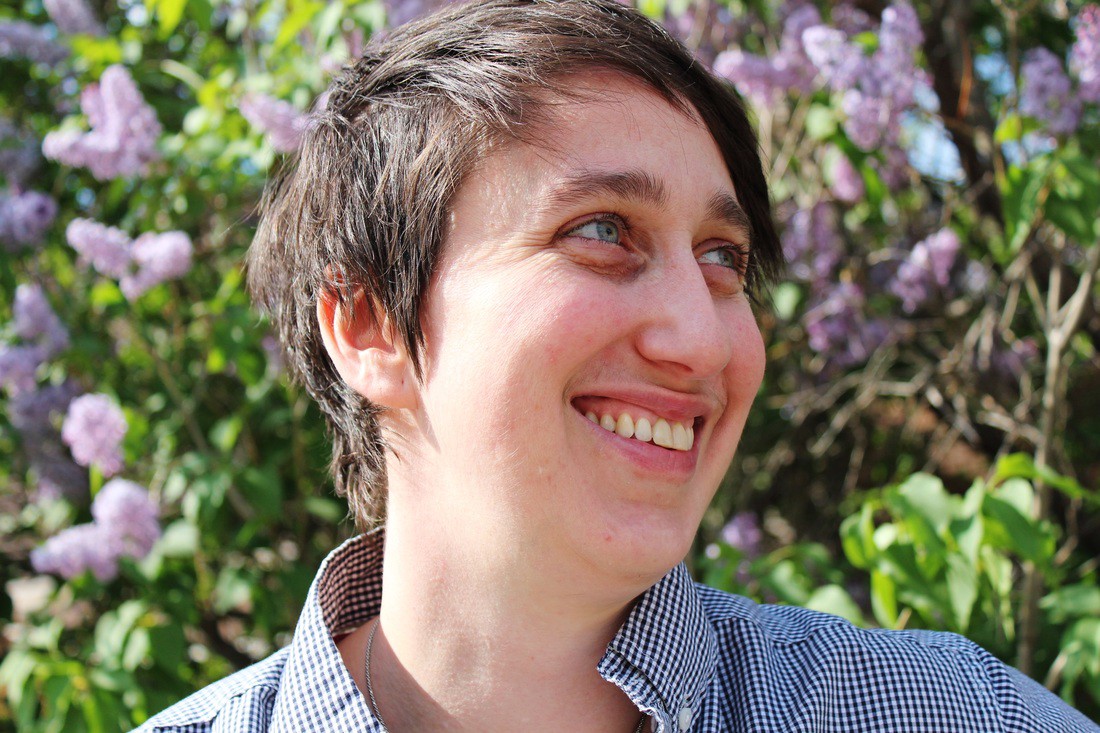
As a former Paralympian, a scholar and professor, artist, speaker, filmmaker, performer, and activist, Danielle Peers is actually the strongest embodiment of her own work. She not only studies diversity and inclusion in sport and movement, and non-normative intersections in art and culture — she is herself a participant, a site of intersection, an intertwined reality. Her personal connection helps her draw together otherwise disparate fields and practices, and it results in something — in the best sense of the word — remarkable.
Peers, an assistant professor in Physical Education and Recreation, works in the multi-disciplinary field of critical disability studies. The field “centers around thinking of disability not as a problem of individual bodies, but as a socio-cultural or political issue,” she explains. In that regard, it is not unlike feminist studies or critical race theory.
Throughout her scholarly career, Peers’ research has ventured into some deeply personal realms. Among them: parasport. Peers competed with Team Canada in wheelchair basketball from 2003 to 2008. She won bronze at the 2004 Paralympic Games, and was named the World’s Most Valuable Player in 2006. As an athlete, she took on active public roles, including National Athlete’s Representative and Women’s Commissioner.
Today, Peers is examining the practices that enable or constrain wide participation in parasport. Parasport — and specifically, the Paralympics — originated from the post-war context of the 1940s. It catered predominantly to white, male veterans with specific injuries — spinal cord injuries, amputations, and acquired vision loss, for example. Yet today, Peers estimates that such injuries would account for less than 10 percent of people with a disability in Canada. This disconnect has led her to a complex question: who gets to play?
At the foundation of Peers’ work is a lens that refigures disability as generative — as she describes it, “something that can create opportunity and produce new ways of imagining and doing things.” Technology is a prime example. “Think about your blue-tooth headsets, or Siri,” Peers offers. “These were designed originally as disability accommodations.” Now, these technologies impact everyday life on a massive scale, regardless of ability.
Peers sees a similar generative and creative opportunity in CRIPSiE, a highly inclusive performance collective where she serves as Artistic Associate, dancer, and filmmaker. “I never imagined I’d ever be involved in dance,” she laughs. Yet in some ways, the project feels like a natural fit: it melds the athletic and the artistic; it is physical, communicative, and deeply connective. “Through that artistic medium, there’s a way of not only representing, but also practicing a way of engaging with disability that I see as incredibly powerful for reimagining how we can go forward,” Peers explains. If disability has inspired imaginative innovation in technology design, why shouldn’t it do the same elsewhere?
It’s this mindset that made Danielle Peers an obvious recipient for the U of A’s inaugural Equity, Diversity and Inclusion (EDI) Awards. The awards, which celebrate members of our university community who have gone above and beyond to demonstrate the values of diversity, inclusivity, and equity, were presented as a part of the institution’s EDI Week. As Peers puts it: “we have a responsibility to shift and change, and critique and support ourselves and each other.” It is something that we can all strive to do a little more each day.
2017 EDI Award Winners
Marnie Colborne
Helly Goez
Tracey Hillier
Danielle Peers
Annina Plummer
Radha Saikia
CRIPSiE Performance at EDI Week
Catch the CRIPSiE performance and talk, “Art in Action: Re-imagining access and inclusion through Disability Arts,” this Saturday at 12:30 p.m.